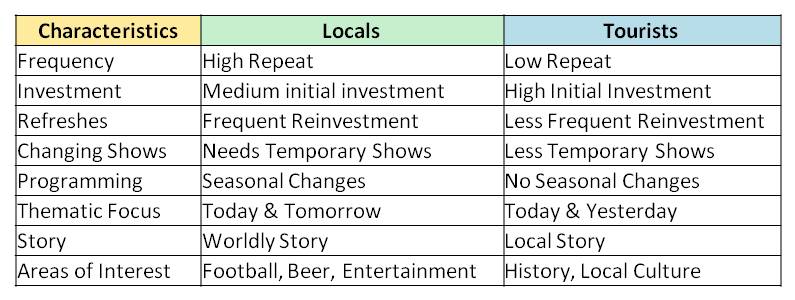
Bob Rogers (source of image)
What is the magic behind creating truly memorable and delightful guest experiences at visitor attractions?
According to renowned experience designer Bob Rogers, the secret lies in finding the right story, shaping it for the right audience, and ensuring that it is an original tale.
Let us look at each of these areas in detail, and examine how we can design and present richer and more compelling experiences at our locations, led by good storytelling.
Finding Your Story
Sharing at a Tourism Masterclass seminar co-organised by the Singapore Tourism Board and Association of Singapore Attractions, Mr Rogers related that the story of any museum, theme park, zoo, or historic attraction lies in the heart of one’s customer.
The best stories develop from the inside to the outside, with the technology and infrastructure layered in the following sequence:
Heart ➔ Story ➔ Experience ➔ Technology ➔ Interior Schematic ➔ Exterior Architecture
(Unfortunately, most attractions are built the other way around!)
To unlock the heart of your visitors, there are four keys to building a strong heart-wrenching story, namely: Love, Hope, Reassurance and Strength.
A good example of how these universal elements can be woven together is be seen in Walt Disney’s tear-jerking dedication speech to Disneyland back in 1955. Quoting from the founder of one of the world’s largest entertainment conglomerate:
“To all who come to this happy place: Welcome. Disneyland is your land. Here age relives fond memories of the past…and here youth may savor the challenge and promise of the future. Disneyland is dedicated to the ideals, the dreams, and the hard facts that have created America…with the hope that it will be a source of joy and inspiration to all the world.” – Walt Disney
Here’s the video of Disney himself making the speech back in 1955.
Understand Who You’re Sharing it With
To tell the right story, you should also pay close attention to your target visitors. The one thing that visitor attractions cannot have – just like perhaps most consumer businesses in the world – is everybody.
In the case of Disney’s theme parks, the family had always been the primary target audience as opposed to teens and youths. Similarly, Las Vegas learned the difficult and expensive lesson that it is primarily a huge adult theme park. The state’s forays in attracting families were met with failure in the past.
Locals vs Tourists
Another lesson to take note of is that the needs of locals and tourists are often diametrically opposite. Science museums are normally more popular with locals while theme parks normally attract more tourists.
To successfully cater to these distinct groups of visitors, you should carefully consider the different unique characteristics of both markets:

Most Importantly, Be Original
Finally, you should strive to be original as much as possible.
Rogers quoted that “Bugs Bunny didn’t become famous by trying to be Mickey Mouse”. Unfortunately, instead of doing R&D, many attractions are doing R&C (Research & Copy) – a practice which should be frowned upon.
Where possible, you should ensure that the characters used in licensing agreements (apparently Rio and Avatar is still available – for a fee) should tell your story rather than their own.
Citing the example of Singapore, Rogers proposed that the truly original story of our island is about how people from different ethnicities, religions and cultures could live together in peace and harmony.
This unique situation sets us apart from many other cities around the world.
Now that’s certainly food for thought!
